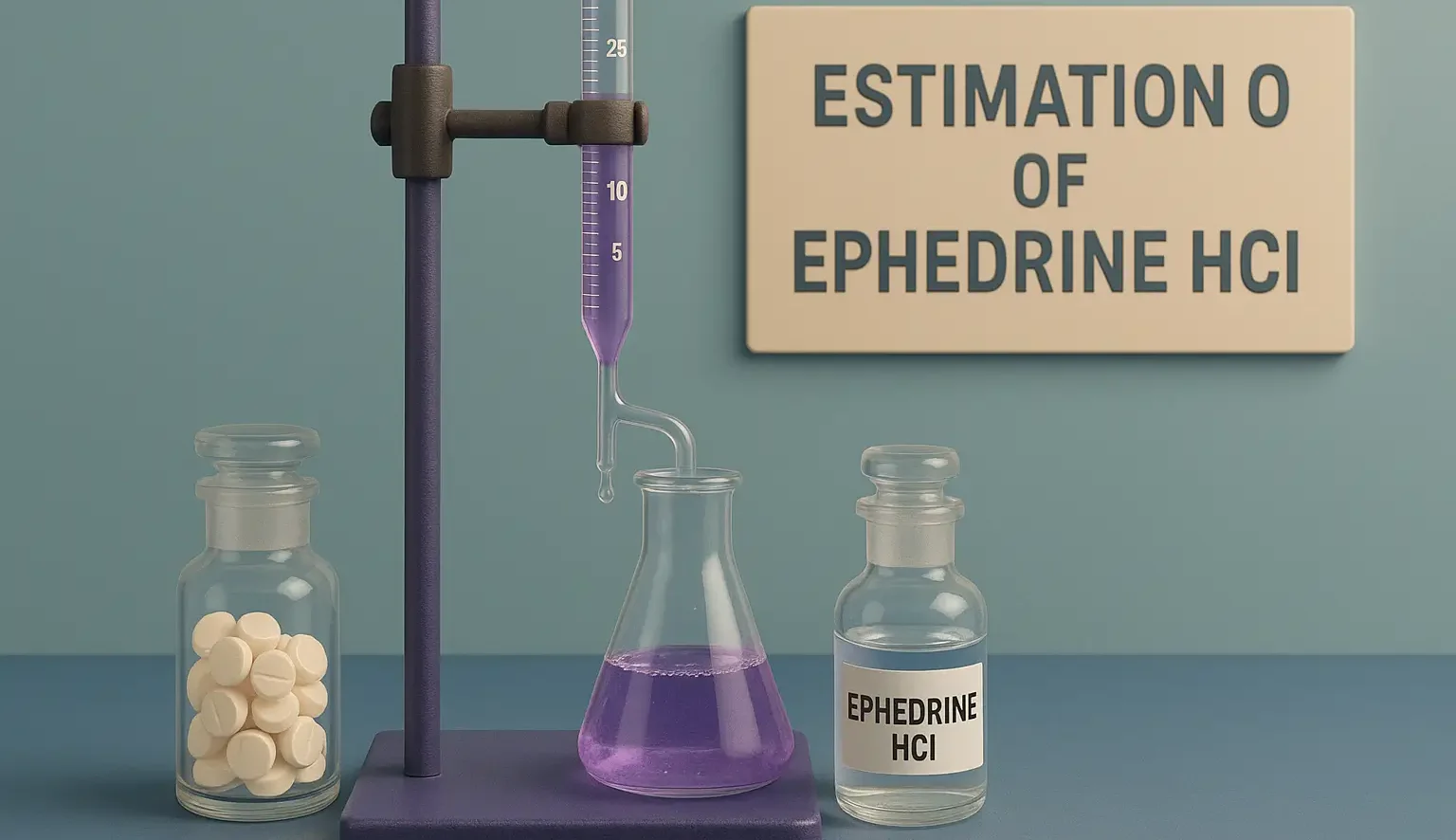- In a pharmaceutical context, Estimation of Ephedrine HCl concentration of in formulations is crucial for quality control and ensuring therapeutic efficacy while maintaining safety.
- Ephedrine HCl is a medication and stimulant often used in pharmaceutical preparations for its bronchodilating, decongesting, and central nervous system stimulating effects.
- One of the methods for estimating Ephedrine HCl is through an acid-base titration.
General Approach for Estimation of Ephedrine HCl using Titration:
Materials:
- Ephedrine HCl sample
- Distilled water
- 1M Hydrochloric acid (HCl) or another suitable titrant
- 1M Sodium hydroxide (NaOH)
- Suitable indicator (e.g., Methyl orange or Bromocresol Green)
Procedure:
-
Sample Preparation:
- Dissolve an accurately weighed quantity of the Ephedrine HCl sample in distilled water.
- The amount of Ephedrine HCl and volume of solution should be such that it falls within the desired concentration range for titration.
-
Titration Setup:
- Add a suitable indicator to the Ephedrine HCl solution. The choice of indicator depends on the pH range over which the acid-base reaction occurs.
- Bromocresol Green or Methyl orange are commonly used indicators for this type of titration.
-
Titration:
- Slowly titrate the solution with 0.1M NaOH from a burette.
- Stir the solution continuously and observe the color change of the indicator.
- The end point is typically indicated by a permanent color change of the indicator.
-
Calculation:
- Record the volume of NaOH used to reach the endpoint.
- Calculate the moles of NaOH used in the titration.
- As Ephedrine HCl reacts with NaOH in a 1:1 molar ratio, the moles of Ephedrine HCl in the sample can be directly inferred from the moles of NaOH used.
- Finally, calculate the concentration of Ephedrine HCl in the sample based on the initial volume and weight of the sample.
Click Here to Watch the Best Pharma Videos


Учитывая, что в статье по ссылке [https://www.firsthope.co.in/estimation-of-ephedrine-hcl/](https://www.firsthope.co.in/estimation-of-ephedrine-hcl/) подробно разбирается анализ именно эфедрина гидрохлорида, хотелось бы уточнить, является ли компонент “A-Phedrin” по второй ссылке идентичным по химической структуре и фармакологическому действию, или это разные соединения со схожими названиями?
Translation:
Considering that the article at the following link https://www.firsthope.co.in/estimation-of-ephedrine-hcl/ provides a detailed analysis of ephedrine hydrochloride, I would like to clarify whether the component “A-Phedrin” mentioned in the second link is chemically and pharmacologically identical, or whether these are different compounds with similar names?
Ephedrine HCl and “A-Phedrin” are not necessarily the same, though they may be related. Proper identification of the active ingredient in “A-Phedrin” is essential before assuming equivalence in chemical structure or pharmacological action.
FirstHope Helper, please take a look https://pillintrip.com/medicine/a-phedrin, there are Pseudoephedrine and Triprolidine in ingredients are they the same or not? Me and Pamela from the same medical university group, interesting in this question 😀
A-Phedrin” (containing pseudoephedrine and triprolidine) is not the same as Ephedrine HCl. While pseudoephedrine is related to ephedrine, they are distinct compounds, and triprolidine introduces a different pharmacological action altogether (antihistamine effects).
So yes, you and Pamela are right to question the equivalency — it’s a case of related but non-identical components, both chemically and pharmacologically. 😊
Thank you!